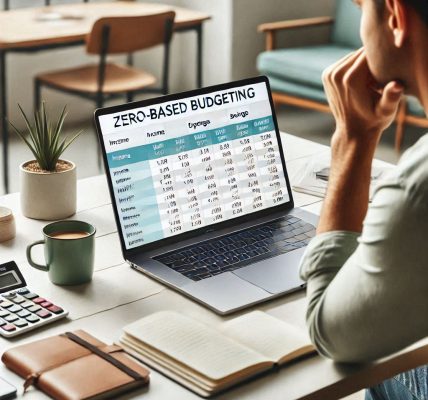Effective budgeting is the cornerstone of good financial health. Whether you’re saving for retirement, paying off debt, or simply looking to control your monthly expenses, tracking where your money goes is essential. One tool that can greatly improve your budgeting process is a spending diary. It’s a simple, yet powerful way to identify where you can cut costs, avoid impulse spending, and make smarter financial decisions.
In this blog, we’ll explore what a spending diary is, how it can help you improve your budgeting, and provide you with actionable tips for incorporating it into your financial routine.
1. What Is a Spending Diary?
A spending diary is a record where you track every expense you make over a specific period, such as a week or month. Whether it’s a notebook, a mobile app, or a spreadsheet, a spending diary helps you visualize where your money is going.
By writing down every purchase, whether big or small, you gain a clear picture of your spending habits. It also helps you to become more mindful of your financial choices, which can lead to better budgeting decisions.
2. Why Should You Use a Spending Diary?
a) Increases Awareness of Your Spending Habits
One of the first steps in improving your budgeting is becoming aware of your spending habits. Most people don’t realize how much they spend on seemingly small purchases, like coffee, snacks, or subscription services. Over time, these expenses can add up significantly, affecting your ability to save.
A spending diary forces you to acknowledge every transaction, making you more conscious of how much you’re spending. This awareness can help you make smarter choices, like cutting back on unnecessary expenses or switching to more affordable alternatives.
b) Helps You Identify Unnecessary Expenses
When you write down your expenses daily, you’re able to spot patterns in your spending. Perhaps you’re overspending on dining out, or you’re paying for a gym membership you never use. A spending diary can help you pinpoint these “leakages” in your budget and take action to cut back on unnecessary costs.
For example, if you notice that you’re spending $200 a month on takeout meals, you can decide to cook at home more often, potentially saving hundreds of dollars annually.
c) Improves Financial Discipline
Writing down every purchase can promote financial discipline. It encourages you to think before you make a purchase, knowing that you’ll need to record it. This act of mindfulness can help curb impulse spending, as you become more aware of your financial goals.
By staying disciplined and sticking to a budget, you’re more likely to avoid falling into the trap of overspending, which is one of the most common barriers to successful budgeting.
d) Tracks Progress Toward Financial Goals
A spending diary isn’t just about tracking expenses; it’s also about helping you achieve your financial goals. Whether you’re saving for a vacation, building an emergency fund, or paying off debt, a spending diary allows you to see how your current habits align with your goals.
For instance, by tracking your spending on non-essential items, you might realize that you could divert that money into your savings or investment accounts instead. This proactive approach to budgeting helps you stay focused and motivated to meet your financial milestones.
3. How to Use a Spending Diary Effectively
To make the most of a spending diary, it’s important to follow some basic guidelines. Here’s how to effectively track your spending and use the information to improve your budgeting:
a) Choose Your Tracking Method
There are several ways to track your spending. Choose the method that works best for you:
- Paper Diary: Write down every expense in a physical notebook. This method works best for people who prefer a tactile approach.
- Mobile Apps: Use budgeting or spending-tracking apps such as Mint, YNAB (You Need A Budget), or Spendee. These apps often sync with your bank account and categorize your spending automatically, which makes the process easier.
- Spreadsheets: If you’re comfortable with spreadsheets, you can create a simple budget template in Excel or Google Sheets. These allow you to customize categories and track your progress over time.
b) Record Every Expense, No Matter How Small
It’s crucial to track every single expense, no matter how small it may seem. Every coffee, parking fee, or app subscription should be noted. While small purchases might seem insignificant in the moment, they can add up over time.
To make this easier, consider categorizing your expenses into groups like groceries, entertainment, dining out, utilities, etc. This will allow you to easily spot areas where you’re overspending.
c) Review Your Spending Regularly
A spending diary isn’t effective if you only use it sporadically. Make a habit of reviewing your diary on a regular basis—whether it’s weekly or monthly. This will give you the opportunity to identify trends, analyze your financial behavior, and adjust your budget accordingly.
For example, at the end of the week, review your expenses and ask yourself:
- Did I overspend in any category?
- Are there areas where I can cut back?
- How can I adjust my budget to stay on track?
d) Set Goals and Track Your Progress
Use your spending diary to set financial goals. For instance, you might decide to reduce your monthly dining-out expenses by 20%. By tracking your spending over time, you can see if you’re making progress toward that goal. If you’re not, you can adjust your behavior accordingly.
Additionally, seeing your progress in black and white can serve as motivation to keep going. Whether it’s saving more or eliminating debt, the act of visually tracking your improvements can keep you motivated and focused.
4. Common Mistakes to Avoid When Using a Spending Diary
While using a spending diary is a simple process, there are a few common mistakes that can hinder its effectiveness:
a) Not Being Consistent
The key to a successful spending diary is consistency. If you skip a few days of tracking your spending, you might miss out on important insights. Set a routine to log your expenses regularly, whether it’s daily or weekly.
b) Failing to Categorize Expenses
Without clear categories, it can be difficult to identify areas where you’re overspending. Make sure to group your expenses in a way that makes sense for you, so you can see where your money is going and make informed adjustments.
c) Ignoring Small Purchases
As mentioned earlier, small purchases can add up over time. Make sure you’re recording every expense, no matter how trivial it may seem. This will give you a complete and accurate picture of your spending.
5. Conclusion
A spending diary is a powerful tool that can help you gain control over your finances and improve your budgeting skills. By tracking every expense, identifying unnecessary spending, and regularly reviewing your financial habits, you can make better decisions with your money. With increased awareness and financial discipline, you can achieve your savings goals, reduce debt, and create a budget that works for you.



